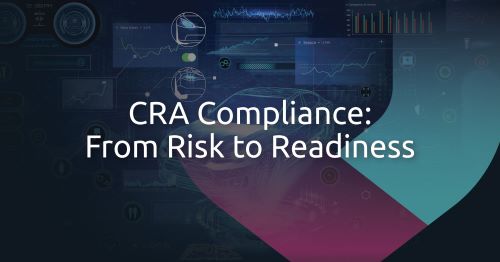
歐盟《資安韌性法(EU Cyber Resilience Act, CRA)》已於 2024 年 12 月 10 日正式生效,為所有包含數位元素的產品(Products with Digital Elements, PDE)制定統一且嚴格的網路安全要求。這些要求涵蓋產品整個生命週期—從設計、開發、部署到退場。儘管法規已經開始施行,主要的合規義務將自 2027 年 11 月 10 日起全面生效,留給汽車產業準備的時間有限。
CRA 對汽車產業生態系的重要性
雖然車廠目前已經遵循如 UN R156(軟體更新管理系統)等法規的要求,其中部分規定的內容亦與 CRA 接軌,但許多供應鏈內的各個PDE元件仍需單獨符合 CRA 的合規要求。
這些包括例如:
- 第三方車載應用程式與售後市場軟體(如改裝、維修、保養、配件、升級以及其他增值服務)
- 無線連接裝置(如免鑰匙進入系統)
- 電動車充電設備(EVSE)
- 農業與建築機械中的數位控制模組
依據 《資安韌性法(CRA)》,製造商必須持續監控漏洞與威脅。若發現漏洞遭到利用,必須在 24 小時內通報歐盟網路安全局( ENISA),並迅速提出修補或是緩解措施。不遵守規定將可能面臨高達 1,500 萬歐元或全球年收入 2.5% 的罰款(以較高者為準)。違規行為包含未通報漏洞、未提交 SBOM(軟體物料清單)或未執行安全設計原則等,將受到處罰。
CRA 合規的三大挑戰
對於供應商與開發者而言,CRA 帶來幾項重大挑戰:
- 在 24 小時內辨識出「被利用」的漏洞
實務上這極爲困難,主要是因為:難以掌握漏洞是否正被利用、缺乏針對汽車系統相關的情境威脅情報、以及PSIRT(產品安全事件應變小組)流程或手動事件處理流程不夠完整。若是沒有創新的威脅情報以及自動化檢測,很難滿足 CRA 24小時之內漏洞預警通報的要求。 - 漏洞、修補管理、與事件回應
在整個汽車的產品生命週期中持續偵測、揭露和漏洞修復需要投入龐大的精力和資源。業界有沒有更具成本效益的解決方案呢? - 供應鏈網路安全的可視性不足
如果無法清楚掌握第三方的網路安全實踐程度,就很難明確釐清合規責任。如果供應鏈缺乏透明度,使得 OEM容易受到來自第三方供應商的合規風險影響。
一站式平台簡化 CRA 合規流程
要滿足CRA要求,企業需建置一套能夠結合「漏洞管理」與「SBOM 管理」的系統以持續執行漏洞識別、評估與修補。
這個系統的關鍵功能包含:
- 自動漏洞偵測與優先排序自動偵測已知與未知漏洞,並依據嚴重程度、可利用性與系統情境分類。
- 自動產生SBOM與管理自動產出並持續更新SBOM,並對照已知 CVE(公開漏洞)與潛在漏洞進行交叉比對。
- 汽車威脅情報系統用於早期預警建構於即時更新的汽車威脅情報平台之上,能即時識別與實際漏洞利用相關的情境。該系統甚至可以描繪完整的攻擊路徑,協助清楚了解威脅的來源和發展方向。
- 拆穿供應鏈元件中隱藏的軟體風險自動辨識第三方元件中具數位元素的產品(PDEs)可能存在的零時差(Zero-Day)以及未揭露的漏洞。
圖說:一套整合漏洞管理、SBOM 管理與汽車威脅情報的平台能滿足CRA要求還能協助汽車供應鏈中的企業降低風險、加速上市時程,並獲得全球市場的信任。
VicOne xZETA 隆重推出-一個集漏洞管理、SBOM 管理和汽車威脅情報於一體的平台,提供專為 CRA 合規性設計的全面解決方案。讓我們幫助您加速合規之路—降低風險、加快產品上市時間並贏得歐洲市場的信任。